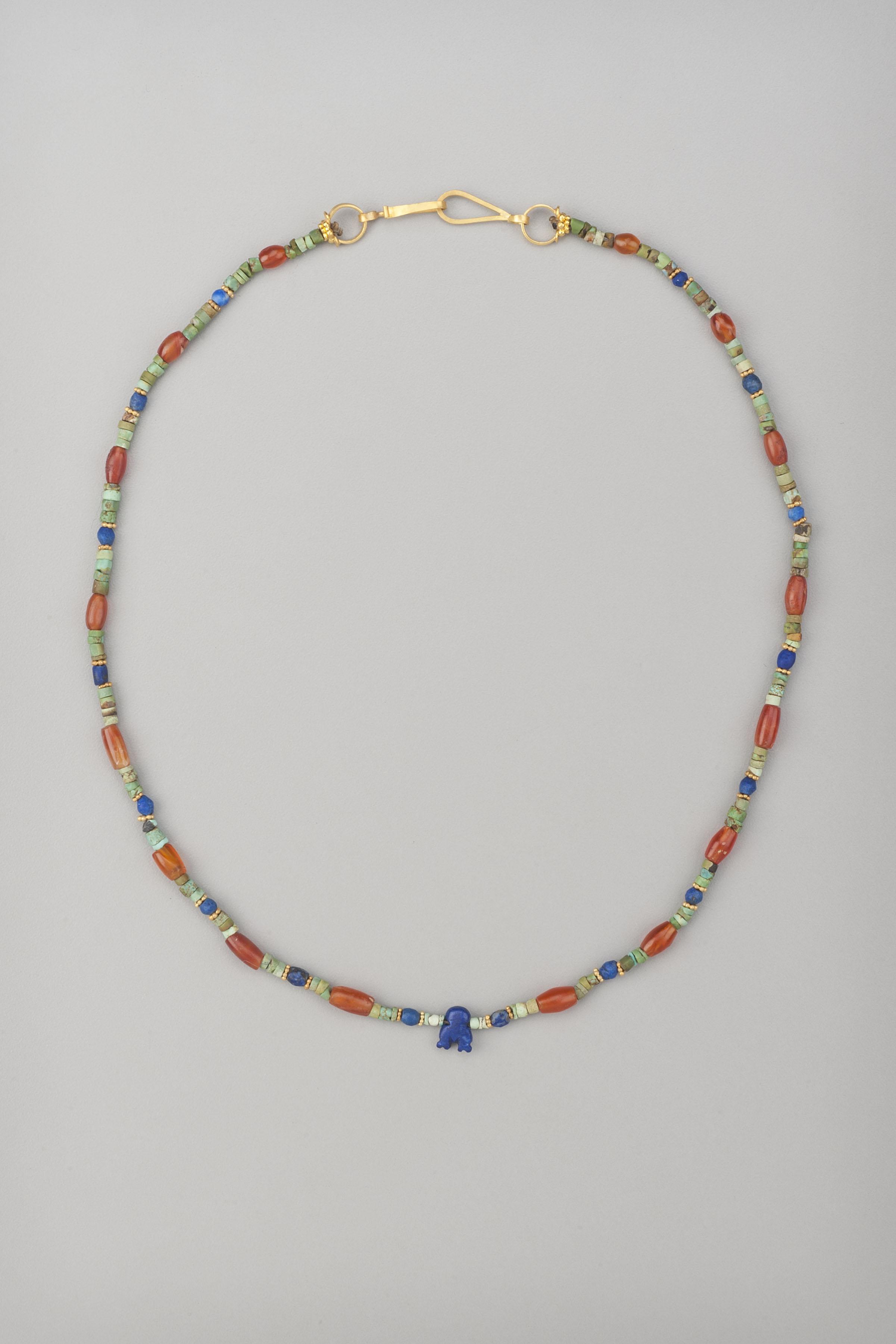Ancient Carnelian, Turquoise, and Lapis Necklace with Lapis Triratna
Collection:
Swat Valley
Material:
Carnelian, Lapis Lazuli, Turquoise, 20k gold
Size:
The necklace is 19 3/8 inches (49.3 cm) in length. The necklace weighs 13.2 gm.
Price:
$2,700.00
A necklace of sixteen carnelian barrel beads alternating with sixteen shorter lapis lazuli barrel shaped beads each faced with a granulated ring bead of 20k gold. On either side of this are short lengths of turquoise disc beads, three or four depending on the thickness of the discs. At the middle of the necklace is a lapis lazuli pendant bead 9mm in height, 7mm in width and 3mm in thickness. The diameter of the perforation is 1 mm. The carnelian barrel beads graduate in size from front to back, the largest being 8mm in length and 5mm in width. The smallest at the back of the necklace is 5.5mm in length and 4mm in width. The drill hole diameter is 1 mm. The lapis lazuli beads are shorter barrel or oval shaped beads from 4mm in length to almost round 3mm beads at the back The widths are from 3.5mm to 3mm and the drill hole diameters are 1mm. The turquoise disc beads are 3mm in width and around 2mm in length. These small turquoise disc beads are the oldest beads in the necklace. They are Bronze Age beads from Afghanistan and are 3,000 to 4,000 years old. The carnelian and lapis beads are 2,000 to 3,000 years old. The Tri-ratna (“three jewels”) pendant is considered to be a Buddhist symbol and was probably used as such two thousand years ago when these beads were made. It is often seen on ancient coins and on pillars and gateways in association with two other symbols that have been linked to Buddhism, the Wheel of the Law, (a wheel with eight spokes), and the Svastika. The Svastika and the Tri-ratna are very ancient symbols that can be found on coins from Taxila, from the Harappan civilization dating to four thousand years ago. As this predates Buddhism, it seems that the symbols were appropriated as they were already in long use and considered to be sacred. The designation “Tri-ratna” is itself a modern appellation. Western scholars in the eighteenth century associated the three pronged shape with the three jewels, the objects of refuge, the Buddha, Dharma, and the Sangha. Whether or not the form was seen as “the three jewels” two thousand years ago, it was certainly associated with Buddhism and was probably felt to a sacred sign and therefore have protective powers. There is some similarity in form to frog effigy amulets from the earliest period. The use of the frog as a symbolic amulet of fertility has occurred in many early cultures in both hemispheres, including Egypt and South American cultures. The sudden appearance of many frogs arising from the waters in the spring is a herald of fertility. The transformation of the frog from the aquatic tadpole to the air breathing land animal that can swim is also symbolic of magical transformation. It is interesting to speculate that the Tri-ratna symbol may have started out as a frog.
